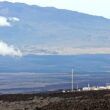Lessons from the Iran deal for nuclear proliferation and disarmament
April 3, 2015
The agreement on the terms for a final settlement with Iran to provide assurance that its nuclear energy and related research and development programs cannot quickly and easily be used to make nuclear weapons is a major diplomatic and political achievement. The alternative was more of what we have seen in the past two decades: An expanding and opaque Iranian nuclear program, ever more capable of producing nuclear weapons if such a decision were made, confronted by international sanctions organized by the United States that increasingly stifle the Iranian economy and hurt the well-being of its people. And, in the background, covert actions and increasingly harsh threats of the use of force against Iran—a violation of the United Nations charter that Israel and its supporters and some Arab states have long pressed for and may still seek.
The diplomatic process and the technical details already agreed in the settlement with Iran offer useful lessons for the global effort to limit the risk that nuclear energy capabilities can be used to make nuclear weapons materials. The first lesson is that this can be done cooperatively, but success requires years of multinational, high-level, continuous, technically informed negotiations based on mutual respect and a willingness to take political and policy risks.
A second lesson: At the heart of the problem are the national capabilities to produce and separate plutonium and to produce enriched uranium, since either plutonium or highly enriched uranium can serve as the key ingredient in a nuclear weapon. Once a state has even a nominal plutonium-production or uranium-enrichment capacity, restraints can serve only to stretch the time it would require to make nuclear weapons material if it decided to do so. Inspections can serve only to give warning that such activity is taking place.
In the joint press statement announcing the deal, the terms agreed with Iran were described as the basis for a “comprehensive solution that will ensure the exclusively peaceful nature of the Iranian nuclear program.” The terms make clear that production of kilogram quantities of plutonium in a research reactor and its separation from spent nuclear fuel, and even research and development on reprocessing spent fuel, are unacceptable risks. Similarly, the uranium supply chain, centrifuge research and production, and an operating enrichment capacity that is negligible by any commercial standard are accepted to be enduring proliferation risks requiring long-term inspections by the International Atomic Energy Agency that go beyond the scrutiny of such programs in any other country. The agreed and seemingly severe restrictions on enrichment capacity and stockpiling of low-enriched uranium only stretch to the order of a year the time it would take for Iran to produce enough highly enriched uranium for a first nuclear weapon.
Important questions for the international community to ask going forward are: a) What do the agreed terms mean for how we assess the proliferation risks from existing and emerging nuclear energy programs, and from the large civilian plutonium-separation and uranium-enrichment programs, stockpiling, and use of these materials as reactor fuels around the world; and b) What do the agreed terms mean for how we are to understand and deal with the risks from nuclear energy programs as part of the effort to achieve a secure and stable world free of nuclear weapons.
From the perspective of international peace and security, the most important lesson from the struggle over containing the risks from Iran’s nuclear program may be that nuclear energy is more trouble than it is worth.
Zia Mian
Program on Science and Global Security
Princeton University













